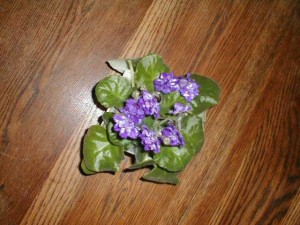The practice of growing plants inside is a daring and precarious one, I was reminded in the Master Gardener class two weeks ago. There is, quite obviously, no such thing as an indoor plant. Plants come from outdoors; they are essentially outside beings we invite into our residences. What we consider to be house plants, for the most part, are tropical or semi-tropical plants that tolerate our indoor conditions fairly well.
If we want to grow plants inside, we have to strike a balance that is just right for house plants to thrive. Those who grow house plants successfully have learned– consciously or unconsciously, through trial and error– how to keep their plants happy. What aspects need to be balanced and managed? Basically, all the basics:
Light
• Water
• Temperature
• Soil
• Humidity
• Nutrients
• Pests
When you raise a plants indoors, you are taking on all the responsibilities of Mother Nature. Given all the factors to consider, how can we keep house plants alive? Here are a few general suggestions.
* Buy healthy plants. To give a plant the optimum chance of survival, take the time to inspect prospective house plants in the store. Look for firm green leaves and stalks. Examine plants for evidence of disease or pests, especially on the bottoms of the leaves.
* Cover plants for transport. Just like many people, plants do not enjoy drastic temperature changes. Make sure that plants are well-covered and insulated before taking them outside, especially in winter, summer, or most Michigan weather! Plants will appreciate a preheated car in the cold months as well as not being left in a stifling hot car in the hot months.
* Treat a new plant like a guest. Give a new plant a guest room until you’ve made sure it’s healthy and going to do well, or at least separate it from your other plants until you are sure it is pest and disease-free. Leave a plant in its original pot for a few months rather than re-potting immediately. Limit the number of adjustments that your new plant must make.
* Do some research. The tiny signs that indicate a bit about a plant’s requirements are not enough information to get to know a plant well. Take the time to learn about new plants from reference books you own or borrow from the library or from the internet. When looking at websites, use reputable sources. Plants have varying needs and requirements. Find out what a new plant likes best to give it the optimum conditions.
House plants can be fantastic companions that provide some cheerful signs of green and growth when winter gives us lots of white and grey. What kinds of plants share your home? What tricks and techniques do you use to keep them thriving and happy?




One Response
Stay in touch with the conversation, subscribe to the RSS feed for comments on this post.
Continuing the Discussion